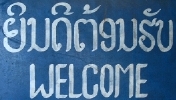
to southern Laos!
l a o s
Pakse, Taat Lo, Wat Phu and the south

to southern Laos!
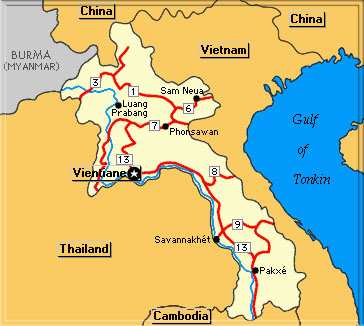
Here we have several photos from Pakse (or Pakxe, as shown on the map at right), a fairly big, important town on the Mekong, with pretty wats and a few other attractions. In addition, we've included a few from the ruins of Wat Phu, and the resort village of Taat Lo, on the Bolaven Plateau.
Ok, let's start in Pakse itself. A busy, dusty town on the banks of the Mekong and Se Don rivers, Pakse at first sight appears to offer the visitor not a whole lot.On closer inspection, though, it has a few nice wats to look at and stroll anound, and is well-positioned as a hopping off point for trips down the Mekong, especially if you're headed to Wat Phu.
This first shot is from just outside one of Pakse's very attractive wats—Wat Than Fai. As you can see, however, modern times have entered the landscape...
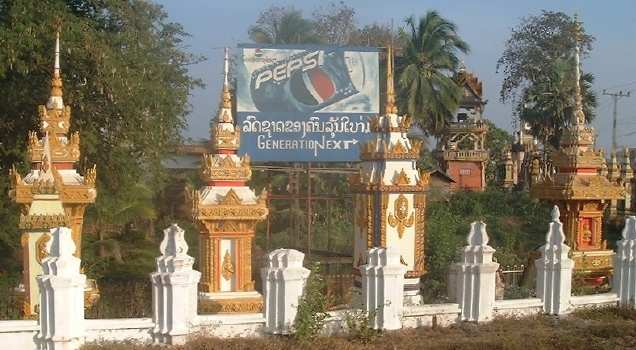
And here's Wat Than Fai from near the entrance of the wat grounds. Pretty, eh?
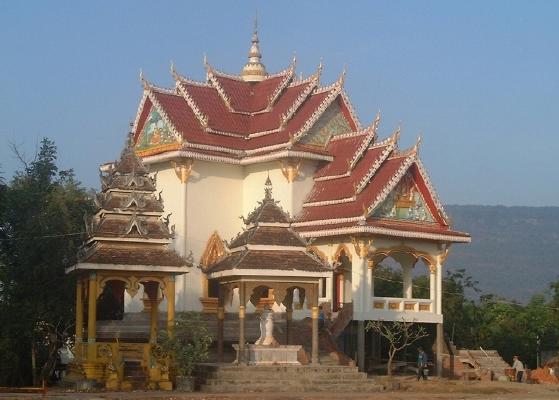
A km or two down the main road, toward the river, is this lovely structure, Wat Luang. These two monks were seen approaching the wat in the morning, and we couldn't resist taking a quick snap of them in their colorful garb.
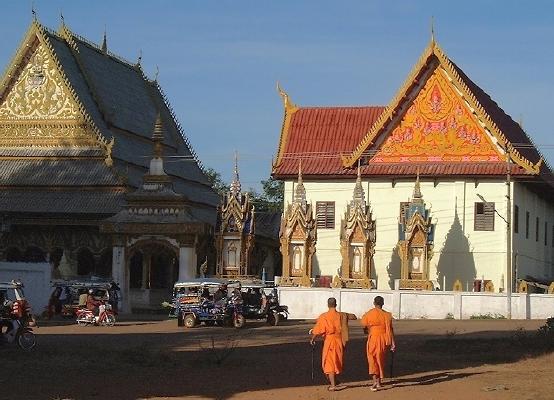
And a shot here from inside Wat Luang's grounds, a moment or two later, as a whole lotta monks started to stream in...
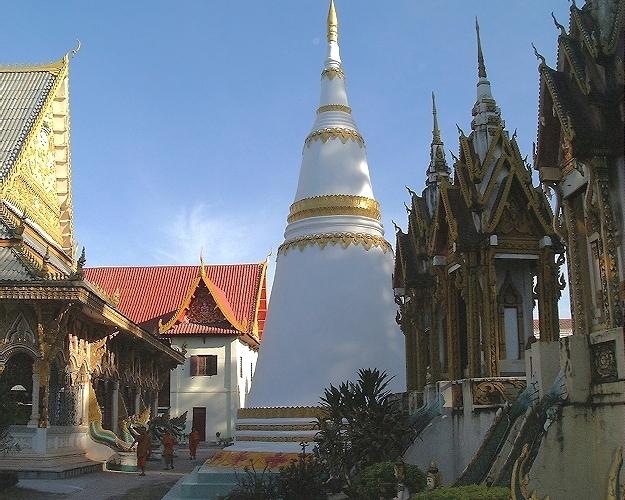
Yes, these are trash cans! And, yes, they're made from used truck tires! Fairly resourceful, we think. (Later on, back in Thailand, we saw a lot more of these, so they're not just a Lao phenomenon.)
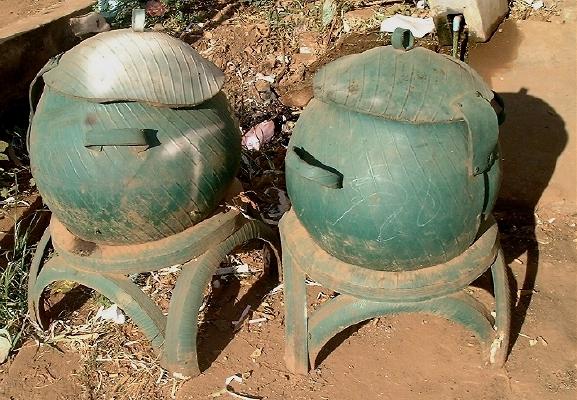
And now on to the Bolaven Plateau of Laos (+/- only about 1,000 feet altitude), where the town—and accompanying waterfalls—of Taat Lo makes for a nice little rest from the long, dusty bus journeys in Laos. (Yes, the water was pretty cold!)
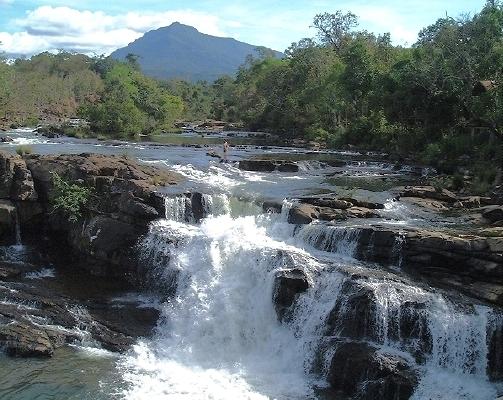
In the village of Taat Lo (or Tadlo, if you prefer) you'll see plenty of houses like this one—fairly typical of southern Laos, in fact, where the heavy rains necessitate these stilts. It's also appears to be a nice place to hang out much of the rest of the year, out of the direct sun.
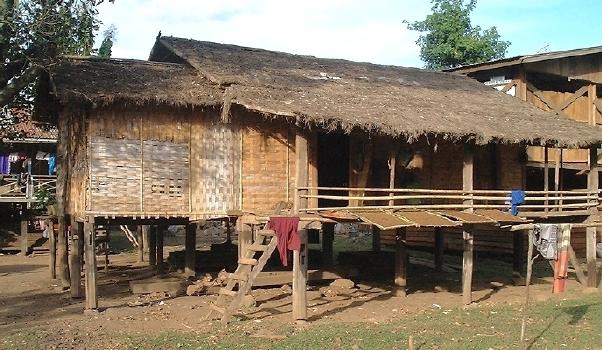
These roto-tillers definitely reminded us of China. Loud and slow, yes, but obviously useful for a more agrarian society. This one was spotted on the main north-south road, at Taat Lo.
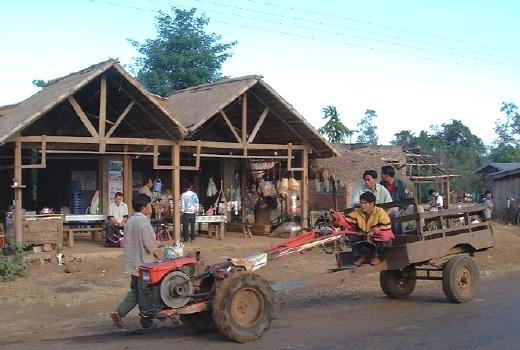
These last four photos are from the famed ruins at Wat Pho, located just south of the village of Champasak—on the Mekong, about 2 hours (by boat) south of Pakse.Built during the Angkor / Khmer civilization (10th to 13th C), Wat Pho is not just very impressing, and beautiful, but also interesting in that it was originally a Hindu creation (the temple sanctuary once housing a Shiva phallus, according to Lonely Planet), and only later "converted" (sorry!) into a Buddhist temple.
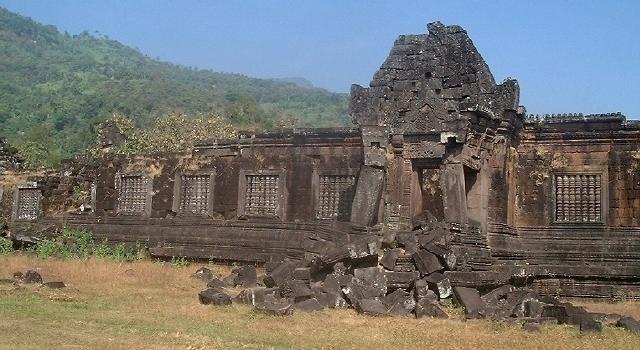
This photo, above, is of one of the two palace buildings, located down at the base of the hill.
Climb the many, ancient stone steps up the side of the hill Phu Pasak, and you come to the temple sanctuary. Even from way out here you can see the current, golden inhabitants inside:
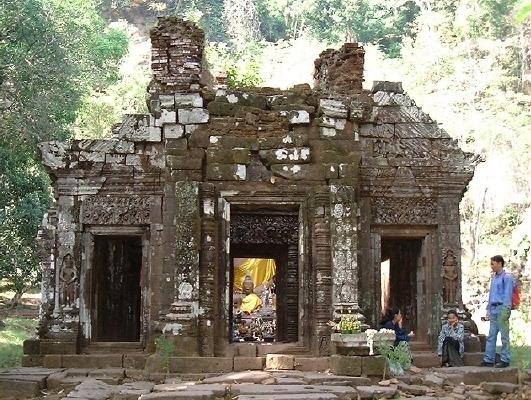
And inside the sactuary . . .
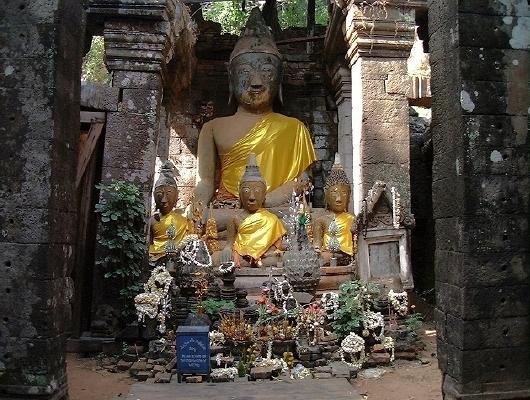
When we visited Wat Pho (also spelled Wat Phu, by some), in late December 2000, there weren't that many visitors there, which was quite nice. But if you're ever able to visit during the annual festival there (Bun Wat Phu), usually in February, you're sure to get an eyeful, although you're sure to lose out on elbow room! Again, according to our Lonely Planet guidebook, that's when "thousands of pilgrims from throughout Laos come to worship at Wat Phu in its Buddhist incarnation. The festival lasts three days and features Lao boxing matches, cockfights, music and dancing."The cockfights aside, that could prove to be an interesting, if not terribly peaceful, excursion.
And, finally, for the last shot on this page, a seated Buddha under the shade of an umbrella, just outside the sanctuary.
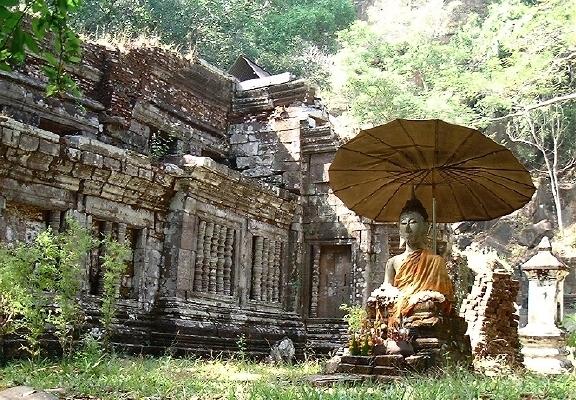
It's hard to imagine this serene place overrun with pilgrims; our brief stay was one of peace and quiet--except for the near-constant clicking of our camera!
That's all for this page.Thanks for taking the (virtual) time here in southern Laos. We hope you've gotten a taste of what Laos has to offer the tourist/traveler, and encourage anyone to hop on the next plane to see it for themselves...
A few useful linksPeter M. Geiser's Internet Travel Guides, on Pakse and Wat Phu.
There have beenvisitors to this page since February, 2001, including you...
